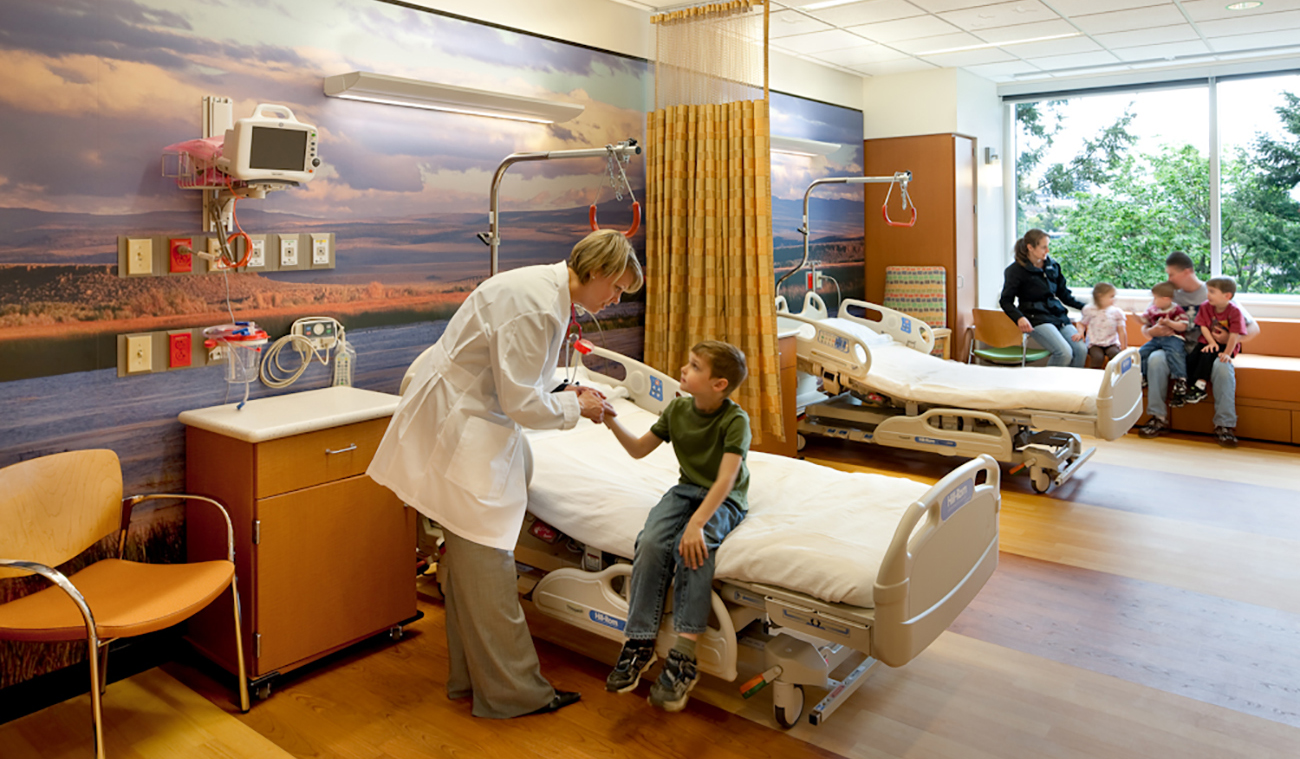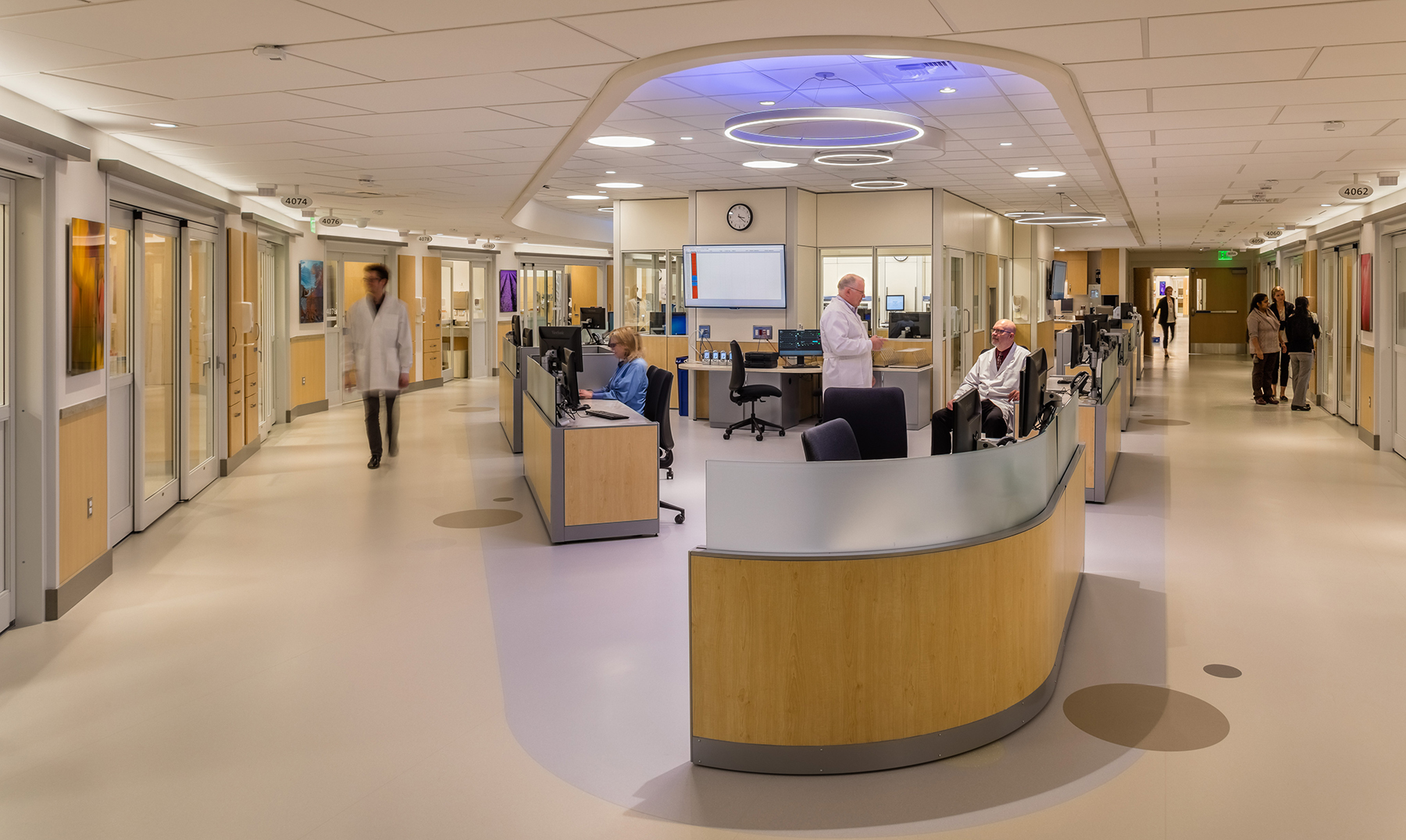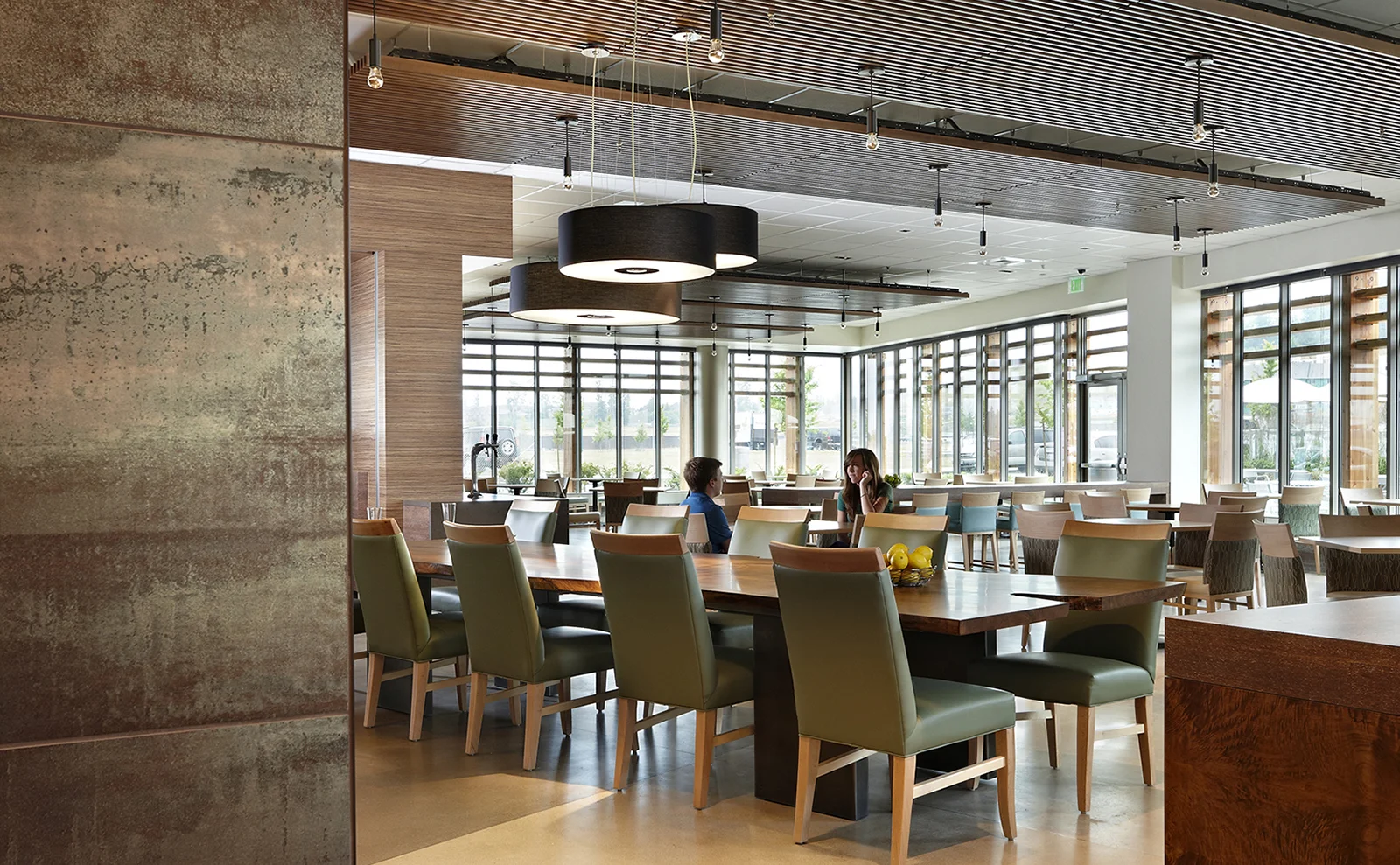Scientific studies have shown that interior electrical lighting systems can be detrimental or beneficial to our biological systems. Detrimental if we are subjected to too much blue light emitted from our digital devices such as televisions, tablets, and phones (including cool white light) or high light levels at night, which we know to reduce or stop the production of melatonin our bodies need for a restorative sleep.
Lighting can also provide healthful benefits if we just follow the sun and the 24-hour clock as our ancestors did centuries ago. Early morning to midday light levels are at their brightest and blue wave lengths are prevalent. As the sun begins to set, light levels gradually diminish, and red wave lengths become dominant. If we were all able to be outside during morning hours and then again in late afternoon, our circadian clocks would already be set—but that is unrealistic for many of us.
It is especially difficult in hospital and long-term care environments. Bed-ridden patients need lighting that stimulates their circadian system and healthcare providers working night shifts need lighting for circadian entrainment. Only very recently has scientific research provided enough information that allows us to design not just for visual acuity but also for biological support.
Today’s tunable white lighting systems were designed to somewhat mimic daylight indoors—sunrise (cool white light) to sunset (warm white light). These systems can be used to provide psychological support by mimicking the solar day, but it takes more than color tuning to provide circadian support. Requirements for circadian response are constantly evolving through scientific research but we already know that specifying color temperature is not sufficient.



Spectral Power Distribution (SPD) or wave length—and not just “color”—needs to be definitive. More importantly, the lighting system must be able to provide the higher light levels during the day—particularly in areas without daylight—and significantly reduced light levels at night. Recent studies suggest that light level or intensity may be more important for circadian support than SPD.
Hospitals are unique in that they serve a very diverse demographic from newborn to elderly, infirm to energetic, cognitive to confused and anxious. Patient stays may vary from a few days to much longer. Some patients may not be ambulatory and are unable to leave the hospital bed. Nursing staff often do rotating shift work bouncing from day to night shifts in the same week. They must be alert and caring for patients that are sleeping at night. Patients need sleep and not to be awakened by staff turning on overhead lighting.
There have been several studies completed in senior living facilities utilizing color-changing systems that are also programmed for high light levels during the day and significantly reduced light levels at night. Results indicated that residents slept better through the night and were more engaged during the day.
Dynamic or cycled lighting systems aren’t needed everywhere but focus should be where there is little to no daylight access and where people spend extended lengths of time. Often hospital lobbies or waiting areas are daylit and/or have easy access to daylight. People move in and through these areas and often don’t spend more than a few hours. These spaces would still benefit from the use of dimming controls to reduce light levels at night, save energy, and extend the life of the lighting system.


